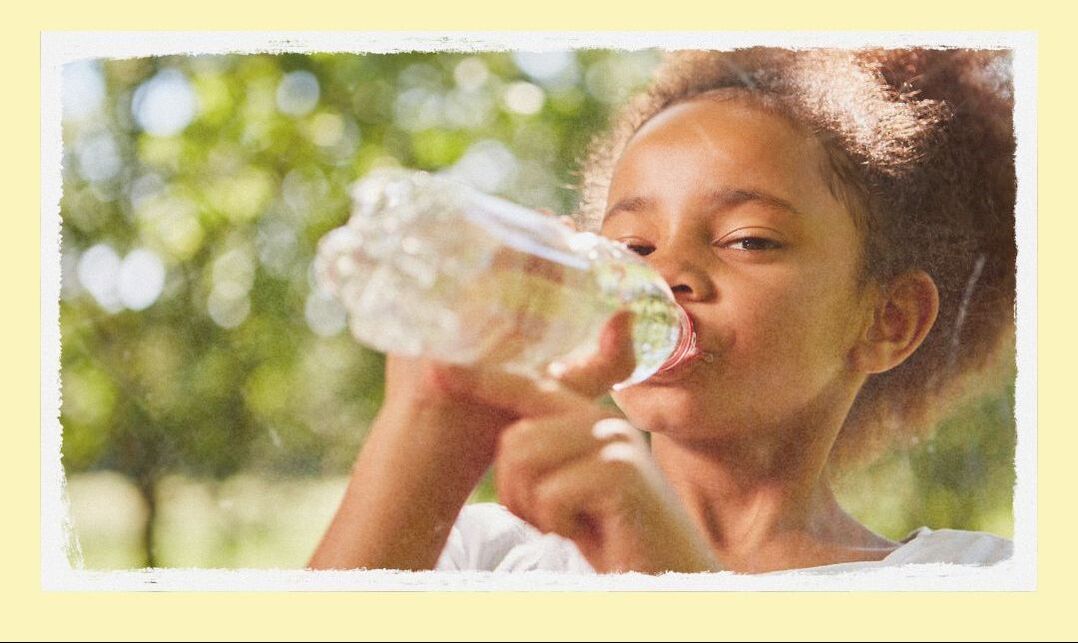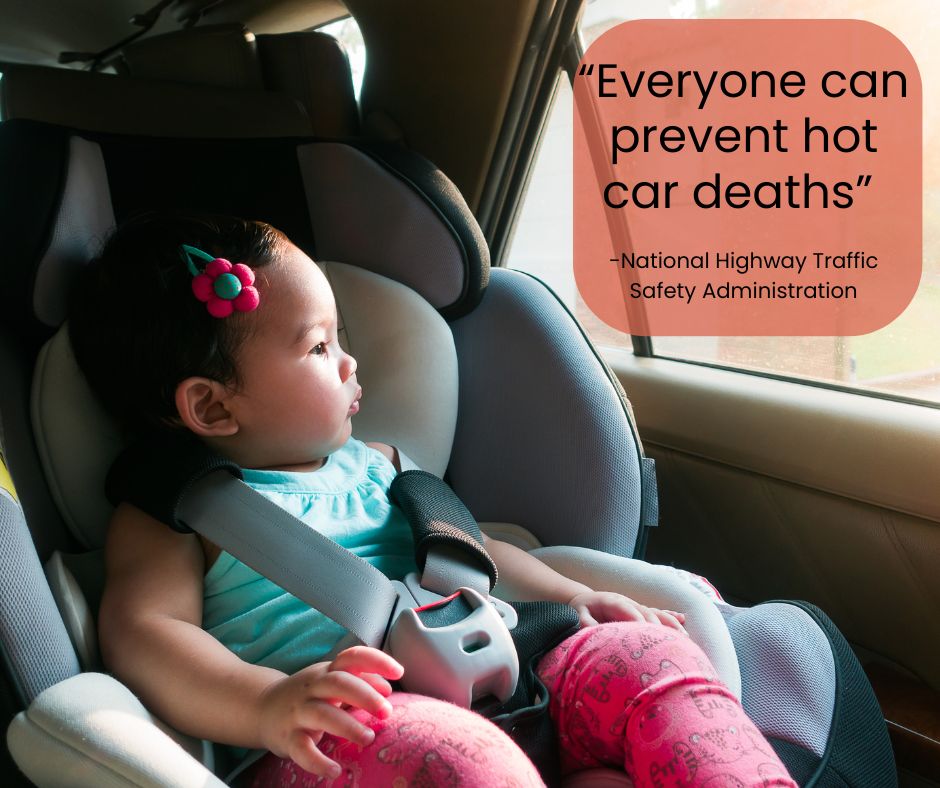 As summer temperatures soar and climate change intensifies heat-related risks, protecting children from heat illness and sun exposure is more essential than ever. Here’s what caregivers and educators should know in mid‑2025—and how to share it with families in your program.
As summer temperatures soar and climate change intensifies heat-related risks, protecting children from heat illness and sun exposure is more essential than ever. Here’s what caregivers and educators should know in mid‑2025—and how to share it with families in your program.
Why Heat Safety Matters
As noted in our last blog post on summer safety, children face serious danger during outdoor play when the heat index reaches 90 °F or higher. Such heat poses elevated risk for children, according to the National Weather Service. Here’s why:
- Children spend more time outside than adults
- Children breathe more air in relation to their body weight than adults, and they are closer to the ground where some pollution settles
- Children can’t get away from extreme heat and pollution and may depend on adults to drink fluids, change clothes or go to a cooler place
Recent research also underscores the compounding effects of heat and air pollution on children’s health—worsening asthma, allergy symptoms, and long-term learning and respiratory outcomes (see the AAP 2024 resources below)
Water, Heat and Sun Safety Summary
In our July 2023 blog post, I talked about water, heat, and sun safety. Here’s a brief summary of risk areas and key tips:
- Drowning: Never leave children unattended
- Heat-related illness: Hydrate, rest, dress lightly, cool off with water
- Sun exposure: Cover up, avoid peak hours, use sunscreen, hats, sunglasses
- Hot-car danger: Never leave children in a vehicle or unattended where they might access one
Additional Considerations: Heat + Pollution + Climate
-Extra heat and sunlight create ground-level ozone, which causes asthma.
-Heat can worsen local air pollution by contributing to smog.
-Prolonged warm seasons and more carbon dioxide in the air lead to a longer, more intense pollen allergy season.
-More intense and frequent droughts create more dust in the air and affect water supplies that people use to stay cool in the extreme heat.
-More wildfires make air pollution worse.
Heatwaves and poor air quality frequently go hand in hand. Increased heat promotes smog and longer pollen seasons, which can exacerbate asthma and respiratory conditions in children (AAP, 2024)
What can help:
- Ensure children at risk dress appropriately, take break, drinks lots of water, and are allowed time to get used to the temperature
- Monitor your area’s Air Quality Index (AQI), and adjust plans for outdoor play accordingly
- Families, childcare programs and schools can work together to provide healthy policies for all children concerning heat and outdoor play
- Talk with your pediatrician if your child is taking any medications; some heighten risk of heat illness
- Incorporate clean-air filters into your home’s, program’s or school’s HVAC systems
- Advocate for greener transportation and local tree planting in your community
Hot-Car Safety
Why Hot-Vehicle Deaths Remain a Critical Threat
- Every U.S. state except Alaska has recorded at least one child hot-car death since 1998, with more than 1,010 children losing their lives from vehicular heatstroke by the end of 2024 (NHTSA, 2025)
- In 2024 alone, 39 children died in hot vehicles—a nearly 35% increase over the previous year—and average annual deaths remain around 37 per year
- So far in 2025, 15 children have died in hot vehicles, and in summer the average is 3 deaths per week
- Even a “mild” 80°F day can heat up a car’s interior beyond 100°F within 10 minutes and over 150°F in 30 minutes, while a core body temperature of 107°F or higher can be fatal
 How Hot-Car Deaths Happen
How Hot-Car Deaths Happen
-Another 24% result from children entering a vehicle unsupervised
-22% of death happen because someone purposely left the child in a vehicle
Best Practices to Prevent Tragedy
Follow the ACT protocol:
- Avoid leaving a child unattended
- Create reminders—put phone, purse, or shoe in back seat as a visual trigger
- Take immediate action—call 911 if you see a child alone in a car (AP 2025)
Also:
- Lock vehicles when not in use
- Teach children not to treat cars as play areas
- Use newer vehicles’ backseat alert systems when available
References & Resources
American Academy of Pediatrics. (2025, June 23). Extreme heat: Tips to keep kids safe when temperatures soar. HealthyChildren.org. https://www.healthychildren.org/English/safety-prevention/at-home/Pages/Protecting-Children-from-Extreme-Heat-Information-for-Parents.aspx
American Academy of Pediatrics. (2024, August 9). Sun, heat & air quality: Keeping kids safe. HealthyChildren.org. https://www.healthychildren.org/English/safety-prevention/at-play/Pages/Sun-Safety-and-Protection-Tips.aspx
American Academy of Pediatrics. (2024, February 20). How climate change, heat & air pollution affect kids’ health. HealthyChildren.org. https://www.healthychildren.org/English/safety-prevention/all-around/Pages/how-climate-change-heat-and-air-pollution-affect-kids-health.aspx
National Highway Traffic Safety Administration. (2025). Child heatstroke prevention: Prevent hot car deaths.https://www.nhtsa.gov/campaign/heatstroke
National Safety Council. (2025). Kids in hot cars: Children are dying in hot cars. https://www.nsc.org/road/safety-topics/child-passenger-safety/kids-in-hot-cars
NSC Injury Facts. (2025). Hot car deaths. National Safety Council. https://injuryfacts.nsc.org/motor-vehicle/motor-vehicle-safety-issues/hotcars/
I’m excited to share my blog!
Whether you are a child care provider or administrator, a teacher, a parent, or a helping professional who supports young children and families, I hope you get some helpful tips to make your job easier and more enjoyable!
- Keeping Children Safe in Summer Heat: Tips for 2025 - July 14, 2025
- Books on Black History Month for Young Children - February 5, 2024
- Winter Play and Book Ideas for Young Children - January 8, 2024
- Diane Goyette
- No Comments
